Cucumber plants are popular because of their usage in salads and pickles. They are easy to grow and maintain. But it is disappointing to see the plant you have nurtured for months dying. The plant will have some severe issues, which can even kill them.
The common reasons are:
- Pest and disease infestation.
- Overwatering or water scarcity.
- Too much or too little sunlight.
- Nutrient imbalance.
- Exposure to extreme temperatures for too long.
- Poor soil conditions.
Check each problem and troubleshoot them individually to revive the plant.
This article is all you need if you have a dying cucumber plant. Here, we will discuss the primary reasons behind a dying plant and the solutions to the problem to bring the plant back to life.
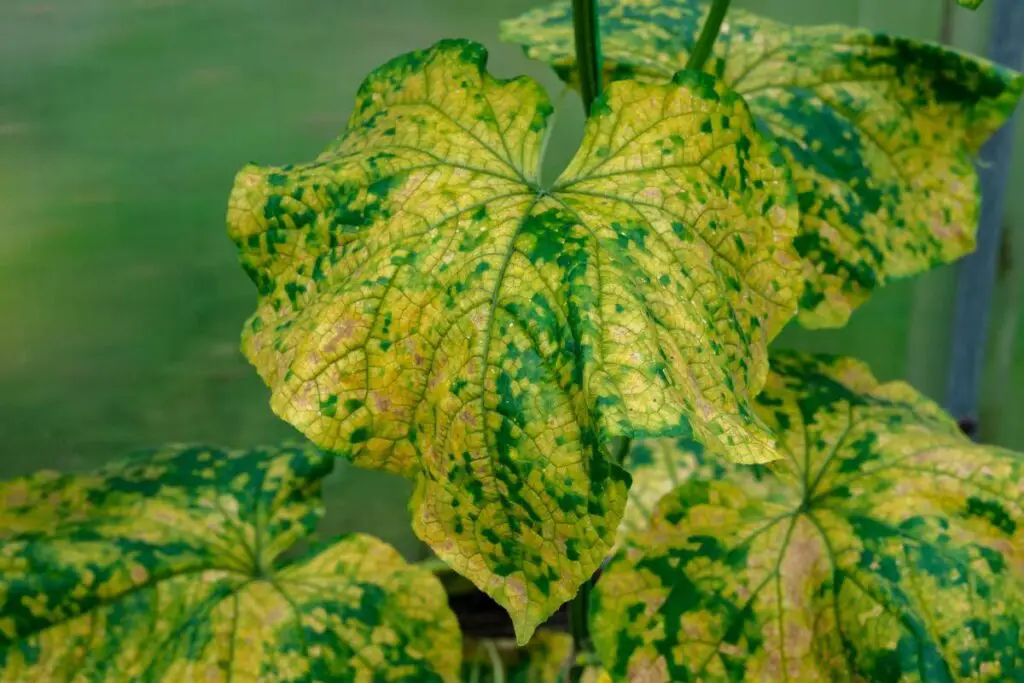
My cucumber plant is dying – What should I know?
As a beginner, if you have faced this problem, you might wonder how to know that your plant is dying and what you should do to revive it.
You need to inspect the plant closely to check its condition and understand them to fix and revive a dying plant.
Wilting and yellowing
One of the common signs of a dying cucumber plant is wilting and yellowing. When you see these signs, take immediate action.
Yellowing and wilting are sometimes the initial signs of an upcoming problem.
Ignoring them means you are slowly pushing the plant toward death.
For instance, wilting indicates that water or nutrients are deficient.
Check the soil for even moistness.
If there is enough moisture, the problem is nutrient deficiency. In that case, add fertilizer.
Yellowing and wilting can indicate too much direct sunlight, hot weather, and diseases.
Correct every possible mistake behind the problem one by one to find out the right one and revive the dying plant.
Understanding the environmental stress
Understanding the ideal environment for cucumber plants is essential for successful growth.
The environmental conditions that can stress the cucumber plants are direct sunlight with hot temperatures, extreme winds, or cold weather.
These environmental conditions can interrupt your plant’s growth and development, ultimately leading to death.
For example, extreme cold weather can make the leaves wither and black.
This can further damage and plant death if you ignore the signs.
Excessive cold winds can damage the leaves and roots of the cucumbers.
If you transplant your cucumbers outdoors, examine and understand whether the environmental conditions suit them, then take them outside.
Inspect the vines and leaves
The leaves and vines can tell you many things about the plant’s health.
When the plant is under stress and dying, the leaves and vines are the first to show signs of stress.
Check for signs of discoloration, spots, wilting, yellowing, powdery-like substance or rust, holes, chewing signs, and dying foliage.
Once you find out the reasons behind these signs and take action accordingly, you might be able to return your plant from the verge of death and keep it healthy.
Check for blossoms and fruit development
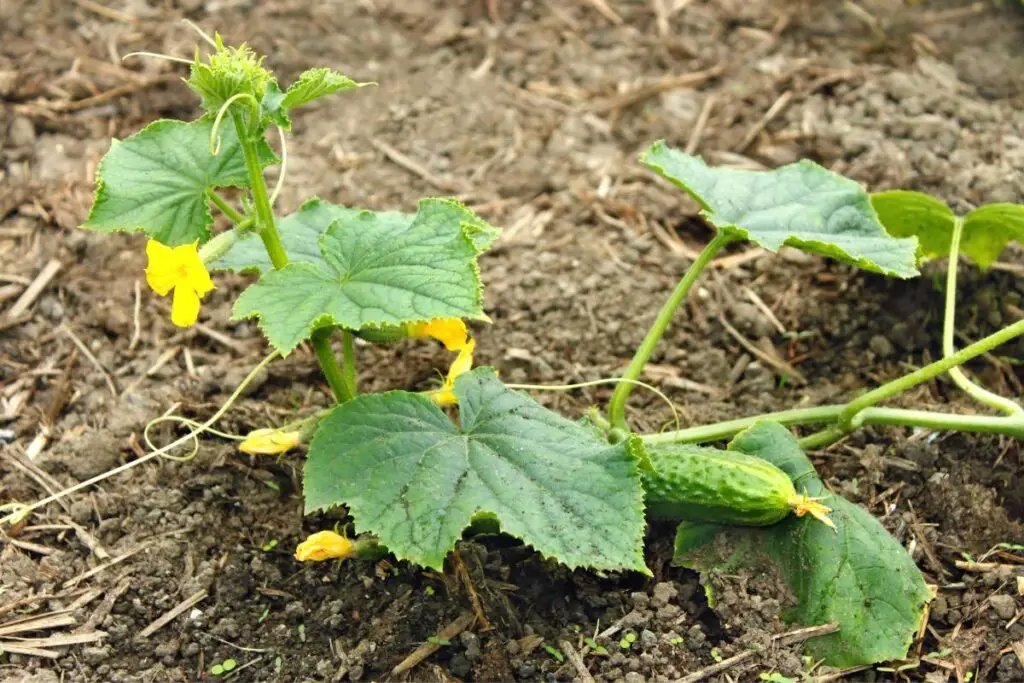
The flowers and fruit development also say many things about the plant’s health.
Flowers are the first stage of fruits. The fruits appear from the female flowers, and their appearance tells a lot about the plant’s fruit production.
The appearance of the flowers signifies that the plant is growing and maturing.
The fruits should be produced shortly after the flowers have appeared. You can spot them inside the flowers.
But if there are no fruits, it indicates something is wrong with the plant’s health or insufficient pollination.
Stem and trunk
The stem and trunk of the cucumbers support the leaves, flowers, and fruits.
They transport the moisture and nutrients to other parts of the plant.
When you check the stem and trunk, look for signs of disease, damage, discoloration, lesions, spots, or bumps.
Also, check for signs of wilting and drooping, which indicates a lack of moisture or nutrients.
Examine the barks too for cracks or splits, which indicate problems with the root health and development and infestation.
Looking for gardening supplies? We have tested 100's of products before recommending them to you guys. Check out our best pick below:
| Image | Gardening Supplies | Best Price? |
|---|---|---|
 Top
Top Top
Top | Raised Garden Bed Kit | Check On Amazon |
 | XLUX Soil Moisture Meter, Plant Water Monitor, Soil Hygrometer Sensor for Gardening, Farming, Indoor and Outdoor Plants, No Batteries Required | No Results |
 Top
Top Top
Top | 82 Pcs Garden Tools Set and Extra Succulent Tools Set | Check On Amazon |
 | Joeys Garden Expandable Garden Hose with 8 Function Hose Nozzle, Lightweight Anti-Kink Flexible Garden Hoses, Extra Strength Fabric with Double Latex Core, (50 FT, Black) | No Results |
 Top
Top Top
Top | Dual Chamber Compost Tumbler | Check On Amazon |
 Top
Top Top
Top | Sunnyglade Plant Stakes | Check On Amazon |
 Top
Top Top
Top | Organic Cold Pressed Neem Seed Oil | Check On Amazon |
 Top
Top Top
Top | Mighty Mint Gallon :-Insect and Pest Control Peppermint Oil | Check On Amazon |
 Top
Top Top
Top | Scotts DiseaseEx Lawn Fungicide | Check On Amazon |
 Top
Top Top
Top | Jacks Classic 20-20-20 All Purpose Fertilizer | Check On Amazon |
 Top
Top Top
Top | 30,000 Seeds Pollinator Attracting Wildflower Mixture | Check On Amazon |
 Top
Top Top
Top | Survival Vegetable Seeds Garden Kit-Over 16,000 Seeds | Check On Amazon |
Irregular growth patterns and habits
Besides the leaves, stems, trunks, vines, and bark, observing the growth patterns can also tell you whether the plant is healthy or dying.
When the plant is unwell or dying, it will reduce its growth or stop growing.
Common reasons for slow or stunted growth are incorrect moisture levels, too much sunlight or shade, or pests and diseases.
Also read: 17 Problems With Cucumber Plants(+Quick Fix)
Reasons behind a dying cucumber plant
Now, let’s illustrate the reasons behind a dying cucumber plant in detail and learn how to solve them and revive the plant.
Lack of water
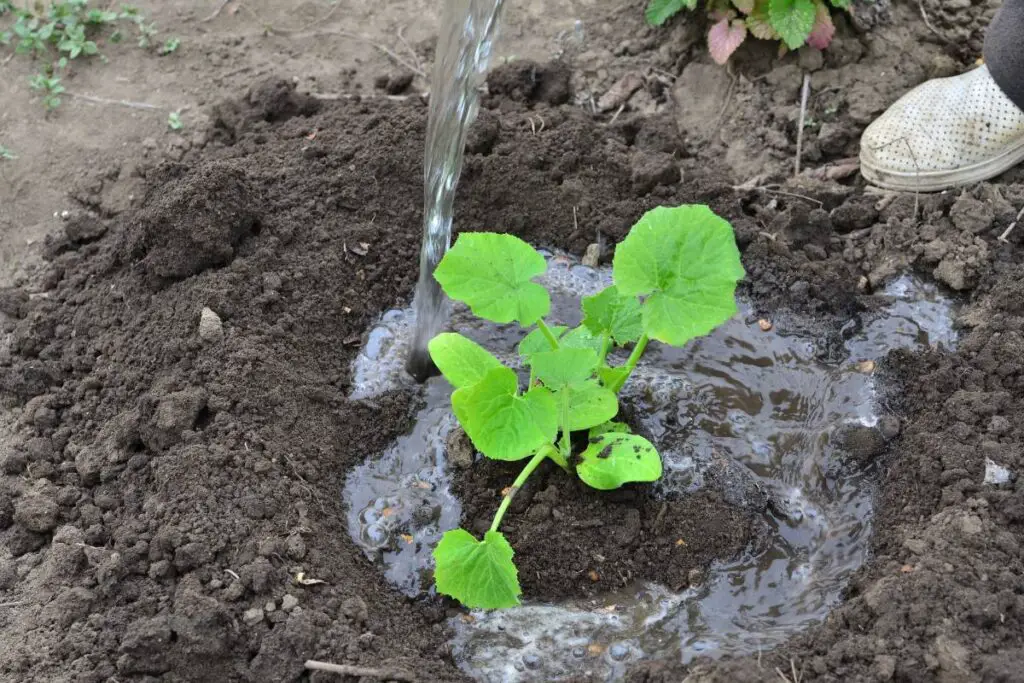
Cucumbers are 95% water. So, without enough moisture, the plant will not survive too long.
Cucumbers need plenty of water to stay firm, hydrated and produce juicy, plumpy, and refreshed fruits.
When the plant suffers from underwatering, it will droop, wilt, start yellowing, and end up dying.
So, you must maintain consistent and regular watering for them to thrive at their best.
Water the cucumber plants with 1-2 inches of water every week.
During the summers, regularly check the soil’s moisture level and water them whenever the top few inches have dried.
Water them 2-3 times per week.
Overwatering
Along with moisture scarcity, abundant moisture will lead to a dying cucumber plant.
But the difference is an underwatered plant is easier to revive than an overwatered plant.
So, do not ever overwater the cucumber plants.
One way to tell if you have overwatered your cucumber plant is by checking the moisture level with your finger.
If the surface feels too wet, you have overwatered it.
Wait for some time until the top few inches have dried.
With overwatering, the roots will suffocate, fail to pass the moisture and nutrients to other plant parts, and lack moisture and nutrients.
Over time, fungi will attack the roots, leading to root rot.
You cannot save the plant if most of the roots get damaged.
If only a few roots have been damaged, take out the plant, remove the black smushy roots, spread some fungicide, and plant the plant in a new, dry, and disease-free location.
Even if you don’t overwater them, the plants may suffer if exposed to heavy rain or floods.
Grow cucumbers in pots if you live in a rain-prone area. Bring them indoors during heavy rain.
The best way to deal with overwatered cucumber plants is to watch for signs like drooping leaves, wilted stems, and yellowing.
Check the soil and give it a break from watering until the top few inches have dried.
Poor soil conditions
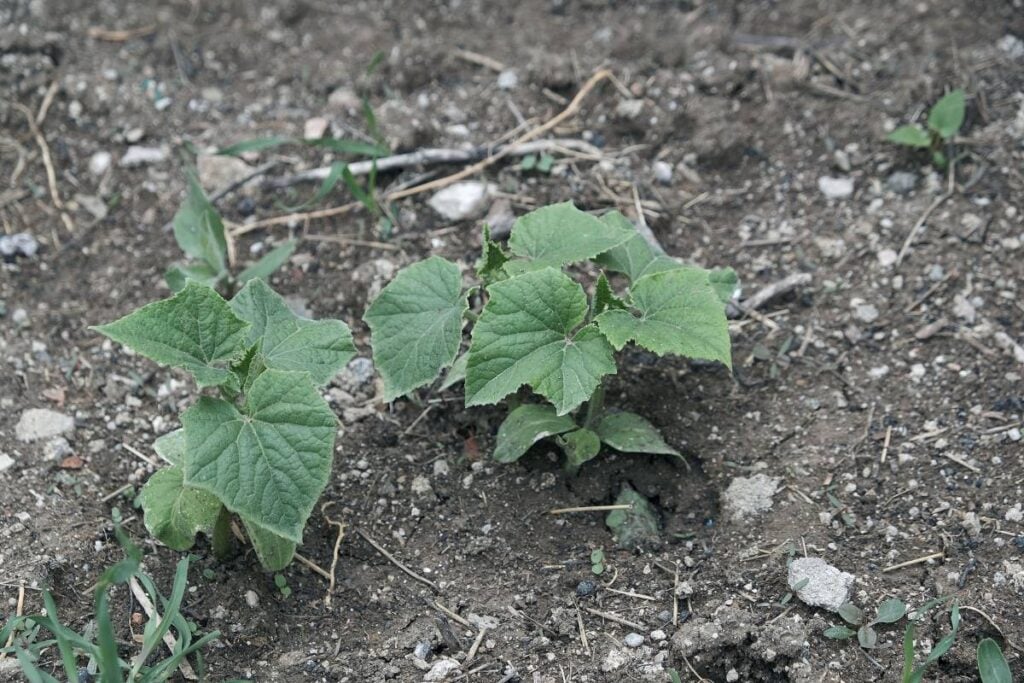
The ideal soil conditions for the cucumber plants include proper drainage, loamy, nutrient-rich, and pH level running between 6.0 and 6.5
Drainage
The right kind of soil for the cucumbers is well-drained and loamy soil.
The soil must drain excess water and retain enough moisture for the plants to survive.
The soil’s drainage system can also lead to overwatering or underwatering.
When the soil is too compact and poor in drainage, the excess moisture will remain around the roots, suffocate them, and lead to overwatering and root rot.
On the contrary, if the soil is too lightweight, it won’t be able to retain moisture or nutrients, leading to repeated dehydration and nutrient deficiency.
If the problem continues, your plant will weaken, show signs of wilting and yellowing, and ultimately die.
To fix the problem, add some organic matter to the soil. It can improve both drainage and retention.
For compact soil, use a fork and carefully aerate the soil.
Or, add earthworms to the soil at the time of planting.
As the worms move around, they will aerate the soil and also add nutrients to the soil.
Fertility
Cucumbers are heavy feeders; thus, you must plant them in nutrient-rich soil.
Cucumbers can grow in nutrient-poor soil but will not survive for too long.
The application of commercial fertilizers starts much later when the plant reaches a few inches.
Before that, the seedlings rely on soil fertility.
If the soil is poor, the plant won’t reach a few inches.
To correct the soil, add organic matter when planting and mulching.
Along with the organic matter, the mulch will add necessary nutrients after breaking down.
pH levels
The next important thing is the pH level.
Improper pH levels can alter the soil’s nutrient balance and lead to several issues.
Too much acidic or alkaline soil is not suitable for any plants.
When the nutrient balance gets disturbed due to the wrong pH levels, the plant will stop absorbing the nutrients from the soil.
As a result, it will react by showing signs like yellow leaves, stunted growth, or low yield. As time passes, it will die.
The ideal pH level of the cucumbers ranges between 6.0 and 6.5.
Use a soil tester to check the pH level after seeing the signs. Add organic matter like compost or peat moss, sulfur, lime, or vinegar if the pH is low.
If the pH levels are high, add aluminum sulfate, mild sulfuric acid, and sulfur.
Nutrient deficiencies
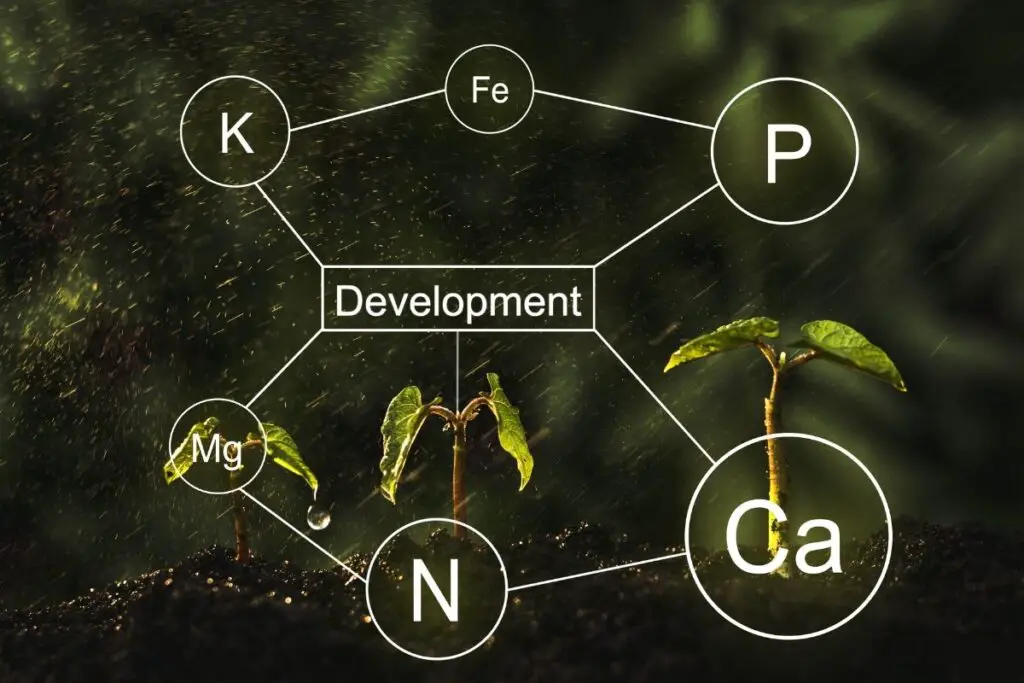
Cucumbers are heavy feeders.
Lack of nutrients in the plant will lead to yellow leaves, slow or stunted growth, and ultimately death.
The old lower leaves get affected in the beginning.
Slowly, the problem will progress to the younger leaves at the top.
Look for the signs of nutrient deficiency signs.
If the leaves have green veins, but the other parts of the leaves are still green, there is a magnesium deficiency.
If the leaves turn yellow, there is a nitrogen deficiency.
The yellowing begins from the inside to the outer edges and veins.
The stems turn purplish or reddish.
During prolonged wet climates, the plant can suffer from a lack of magnesium or calcium.
It will further make the plant lose its ability to absorb nutrients from the soil through transpiration.
Add nutrients to the soil with organic matter and balanced liquid or slow-release fertilizers.
It is also important to note that excessive nitrogen is not suitable for their health.
For magnesium deficiency, you can try Epsom salt.
Improper pruning
Pruning the cucumbers is essential when the leaves and vines are overgrowing.
When too many leaves grow, the plant cannot focus on making flowers and leaves and keep using the energy on foliage growth.
Besides, too many leaves can block the sunlight from reaching the fruits and hinder their growth and development.
Removing some of them will give them enough sunlight.
But the problem with pruning occurs when you prune the leaves too much.
Excessive removal of the leaves will stress the plant so much that it can even kill it.
If you have pruned too much by mistake, take extra care of the plant.
Provide them with adequate moisture, sunlight, and nutrients – neither too less nor too much.
If the plant is getting weak and drooping, use a trellis to provide support.
Be patient and observe the plant’s growth pattern. After some days, it should start reviving and growing new leaves.
Inadequate sunlight or too much exposure
Cucumbers need 6 to 8 hours of sunlight daily for adequate growth and development.
Sunlight is vital for photosynthesis, chlorophyll, and overall growth and development.
Without enough sunlight, the plant will not grow well or produce fruits and flowers.
The soil will remain wet for too long, causing rotting, and the plant will end up dying.
You can determine the problem when the leaves become yellow and start drooping.
Over time, lack of sunlight will kill the plant.
Check whether it is getting enough sunlight.
Ensure the plant receives optimal sunlight for 6 to 8 hours.
Also, remember that intense sunlight can be harmful and deadly for them, especially when accompanied by extreme temperatures.
At that time, provide shade during the hottest time of the day.
Temperature stress
Healthy cucumber plants can get affected by stressful temperatures.
The ideal temperature for the cucumber plants ranges between 75 and 85°F.
The lowest temperature cucumbers can tolerate is 50-55°F, and the highest temperature is 90-95°F.
If the cucumbers get exposed to extremely hot or cold weather for prolonged periods, it will stress the plant too much.
Excessive cold damage or heat stress will ultimately kill the plant.
Protect your plant by taking action whenever you watch for signs of damage.
If you ignore it, the plant will end up dying.
Shriveled and black leaves are signs of cold damage.
And dry, thin, yellow, and curly leaves indicate heat stress.
Cover your plant with frost or row covers to protect it from cold damage.
Add a thick layer of mulch to stop the cold weather from reaching the roots.
If you are growing the cucumbers in pots, bring them inside your house and maintain warm temperatures with a heat mat.
During the summers, put a shade cloth above the garden cucumbers during the hottest time, i.e., from 11 am to 3-4 pm.
Provide adequate water to the plant to prevent heat stress and add a layer of mulch to retain the moisture in the plants.
Competition with weeds
Cucumbers need plenty of sunlight, water, and nutrients to thrive in the long run.
Weeds around the cucumber plants will take up the nutrients, water, and sunlight the cucumbers receive.
There will be a competition for these resources.
If the weeds could meet all the requirements, the cucumbers would get little or nothing.
So, the cucumbers will not be able to develop well.
The plant will stop growing, become weak, and ultimately die after some time.
Not only do weeds compete for nutrients, but they can also encourage diseases.
Keep the surroundings neat and clean, and remove all the weeds.
To suppress weed growth, apply mulch around the cucumbers.
Whenever you spot any weeds, pull them off the ground.
Transplant shock
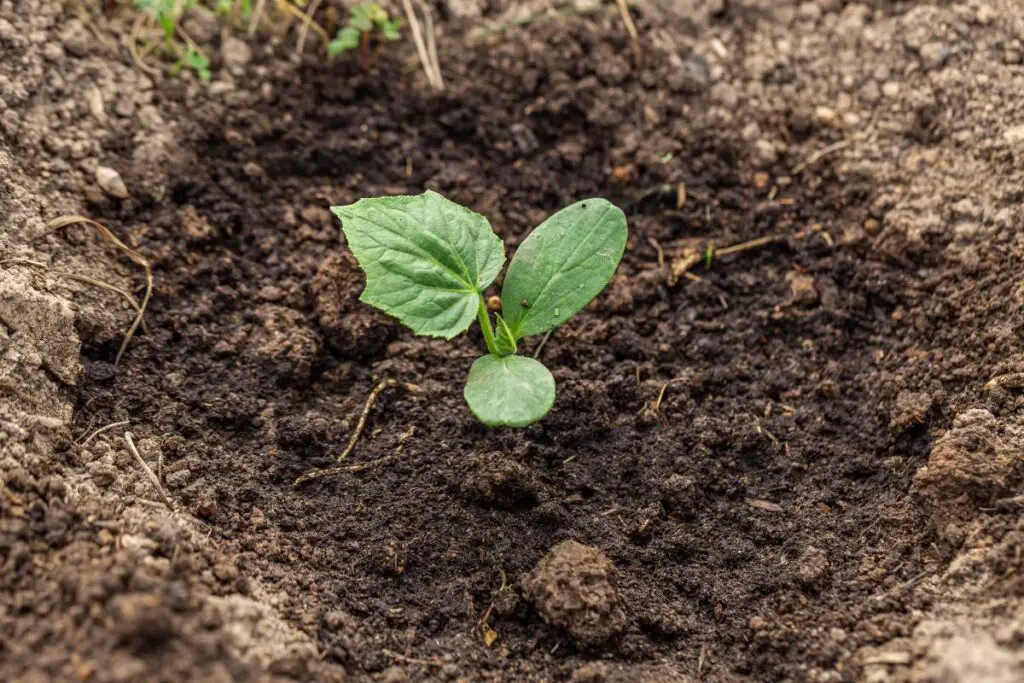
Cucumber plants are easy to grow, but their roots are sensitive, especially the taproot. They do not like to be disturbed.
That is why they get shocked when you transplant them to a new location.
They will look sad and wilted until they adjust to the new environment.
Shocked transplants need extra care, maintenance, and patience.
Negligence will kill the plant.
For happy and living transplants:
- Do not be too early or too late for transplantation. The right time is when the seedlings are well-established, and the soil temperature is above 60-65°F.
- Harden your transplants before shifting them outside. Expose them to the outdoor elements daily for 1-2 hours and slowly increase the timing. Continue this until the plant is ready to be taken outside.
- Transplant them in the early morning or evening, when there will be no chance of heat stress.
- Plant them in well-drained, loamy, nutrient-rich soil.
- Plant them where they can receive 6 to 8 hours of sunlight. Also, protect them from extreme heat and cold weather.
- Water them whenever the top few inches have dried.
- While transplanting, add organic matter. After the plant starts growing and reaches a few inches, fertilize them with a liquid fertilizer every 2 weeks or with a slow-release once a month.
Pests and diseases
The last and the most common thing that ensures cucumber plant death is pests and diseases.
When a plant gets attacked by pests and diseases, it is essential to take immediate action to save it.
If ignored, reviving the plant is impossible.
Pests
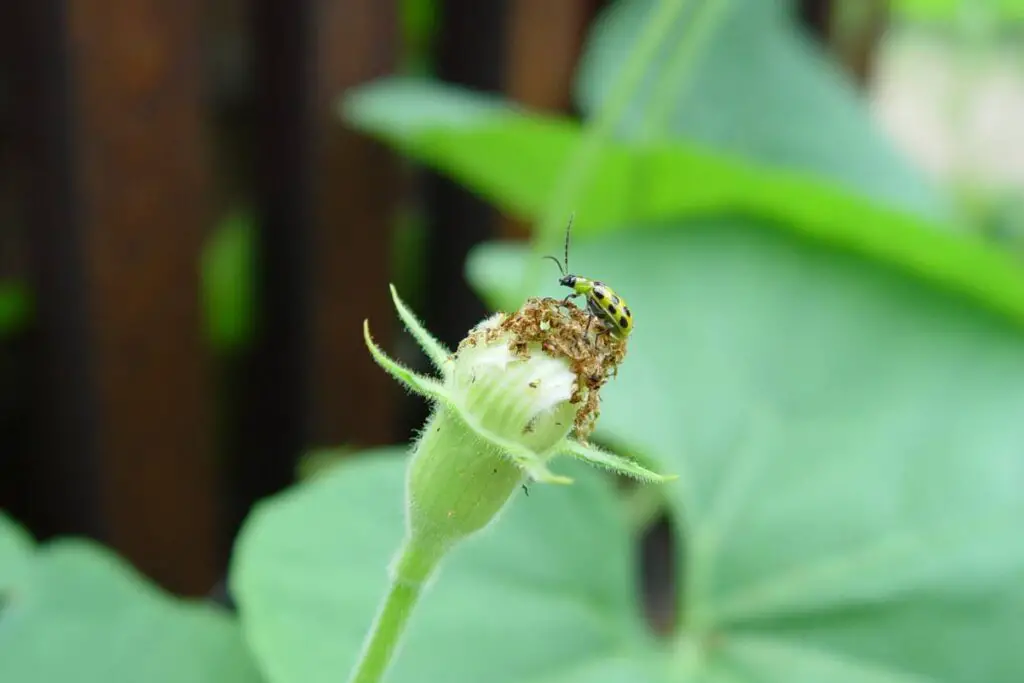
Several pests and insects can damage your cucumber plant.
Some suck the sap of the plant, making it weak and dry.
Some feed directly on the leaves, flowers, and vines.
If the plant is not treated promptly, it will eventually die.
When your plant shows signs of distress despite your efforts, it could be due to a pest infestation. Look for yellowing, wilting, or curling.
Check the underside of the leaves to spot them.
Common pests are cucumber beetles, aphids, squash bugs, spider mites, and whiteflies.
Whenever you notice a pest infestation, isolate your plant from the other plants and remove the infected leaves.
Spray some neem oil or any other horticultural oil over the infested parts. Also, try some insecticidal soap if the infestation is too much.
Diseases
When diseases attack the cucumber plants, reviving them back to life is complicated.
Though most of them can be treated, a few are untreatable.
Some common diseases are:
- Blight diseases
- Bacterial wilt
- Fusarium wilt
- Verticillium wilt
- Powdery and downy mildew
- Mosaic virus
The signs of these diseases are yellow streaks, lesions, mosaic patterns, and smaller and misshapen cucumbers.
Taking action whenever you watch these signs can save the plant from dying.
Unfortunately, some diseases like Verticillium or Bacterial wilt cannot be treated.
In that case, you have to dispose of the infected plants.
As for the others, your first step is quarantining the plant and removing the infected leaves.
Apply some neem oil or copper fungicides to suppress the disease and stop it from spreading to the entire plant.
To prevent the disease:
- Keep the soil evenly moist and not wet. Add lots of manure or compost for nutrients.
- Use neem oil on the leaves before flowering as an insect repellent.
- Coat the cucumbers with vegetable oil to prevent fungus.
- Plant the cucumbers 16 to 24 inches apart so that if any plant catches any disease, the other plants remain safe.
- Grow disease-resistant varieties like Country Fair, Little Leaf, Cross Country, Citadel, and Bristol.
Can you revive a dying plant?
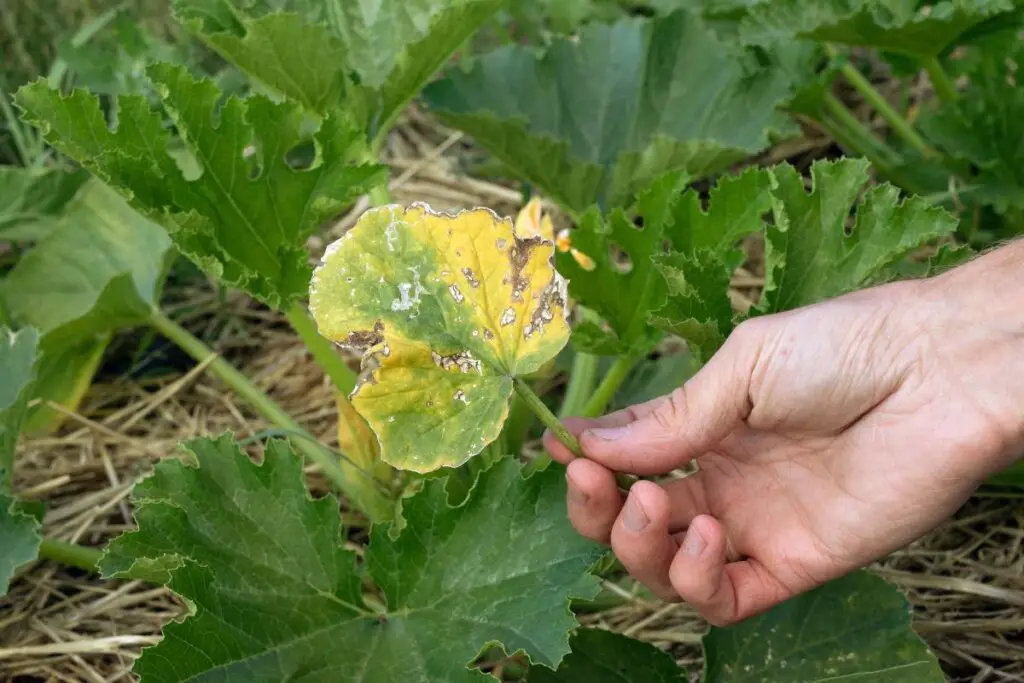
There is a possibility to revive a dying plant if you take immediate action after noticing the signs of stress like yellowing, drooping, wilting, or browning.
To revive a plant with a dying symptom:
- Stop whatever you are doing and inspect the plant closely. See if there are any pests or diseases, whether it is receiving adequate sunlight, moisture, or nutrients, or if you are not overdoing anything.
- Once you find out the cause, try to correct your mistake.
- Continue caring for the plant as you did, and ensure you don’t overdo or underdo anything. That will again stress the plant, and revival would be more challenging than before.
- If your plant is diseased, isolate the plant to prevent an outbreak, and remove the infected leaves. Use fungicides to treat them.
- You can use neem oil as a preventive measure even if your plant is not infected. This will provide humidity to the plants and keep infestations at bay. Use it every 15 days in the evening when the sun goes down. Direct sunlight over the oil-sprayed leaves can cause burns.
Should I cut off the dead leaves?
Pruning will keep your plant healthy.
If dead or damaged leaves cannot be revived, clear them.
Letting them stay means the plant will use up all its energy to revive these plants.
Removing them will encourage the plant to grow new leaves and flowers.
Final thoughts
When your plant shows stressful signs, examining its health and checking what is wrong is crucial. Many reasons can kill the plant, like infestations, wrong watering, too much or too little sunlight, nutrient deficiencies, temperature stress, or pests and diseases. These problems do not immediately kill the plant.
When something is wrong, you will try to display the signs of stress. If you ignore the signs, over time, the plant will end up dying. The best way to stop your plant from dying or bringing it back from the verge of death is to watch out for the stressful symptoms and take immediate action. Provide adequate sunlight, water, and nutrients to stop the plant from getting stressed.
Please protect it from extreme temperatures, keep the surroundings clean, and plant them in good soil. If the soil is inappropriate, make it ideal by adding organic matter and mulch. If you suspect pests and diseases, isolate the plant, remove the affected plants, and treat them by spraying neem oil, horticultural oils, insecticidal soaps, and fungicides.
Is it possible to bring back a withered cucumber plant?
Various reasons are responsible for the withered plant. If you find the right cause and correct the mistake, you can revive it. But resurrection would be too challenging or impossible if the damage level is more than 60-70%.
What does a dying cucumber plant look like?
When the cucumber is dying, it will look sad and pale. The leaves will have lots of discoloration, curls, or wilting. Reviving such a plant is only possible if something is still in good condition. Otherwise, you have to dispose of the plant.
Reference: Cucumber Wikipedia
